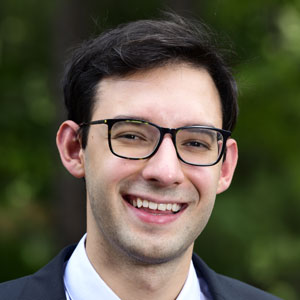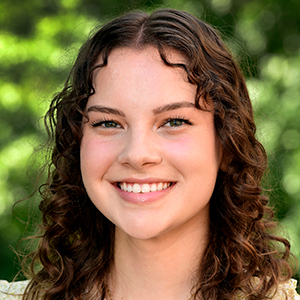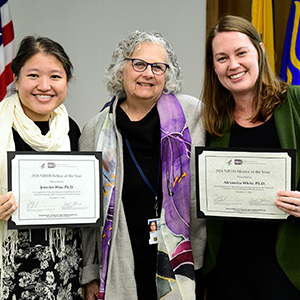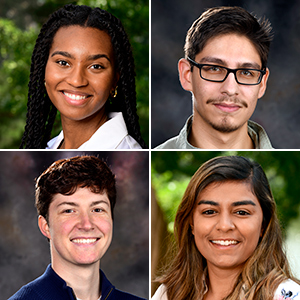“So, fellows, what type of research do you work on?”
Fourteen NIEHS trainees answered that question during the fifth annual Big Picture, Small Talk Communication Challenge, held Feb. 26. They explained their research and its public health implications to a panel of nonscientists, in three minutes or less.
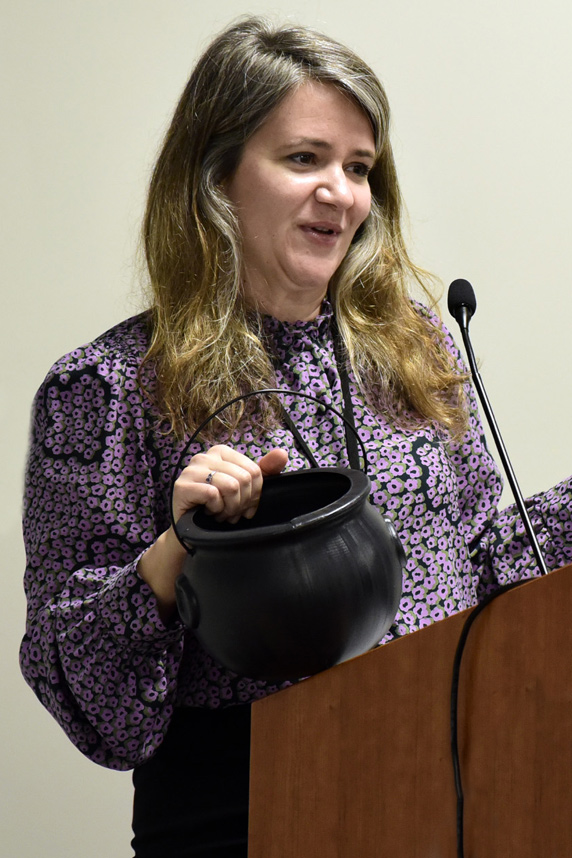 A new twist in this year’s competition saw Collins drawing names from a bucket to determine the order of speakers. (Photo courtesy of Steve McCaw)
A new twist in this year’s competition saw Collins drawing names from a bucket to determine the order of speakers. (Photo courtesy of Steve McCaw)Tammy Collins, Ph.D., head of the institute’s Office of Fellows’ Career Development (OFCD), said the competition boosts young scientists’ public speaking skills. OFCD sponsored the event.
“It helps them step outside of their research bubbles and really think about why their work is important to a broad audience,” she said. Administrative staff and contractors judged the presentations, in keeping with the goal of helping trainees communicate with diverse groups.
Bringing home the bacon
The following individuals won $1,500 travel awards.
- Bevin Blake, an Intramural Research Training Award (IRTA) predoctoral fellow in the National Toxicology Program’s Reproductive Endocrinology Group, led by Sue Fenton, Ph.D.
- Jacob Kresovich, Ph.D., an IRTA postdoctoral fellow in the Molecular and Genetic Epidemiology Group, led by Jack Taylor, M.D., Ph.D.
- Niketa Bhawsinghka, Ph.D., a visiting postdoctoral fellow in the Mechanisms of Mutation Group, led by Roel Schaaper, Ph.D.
 The winners, from left, were Blake, Kresovich, and Bhawsinghka. (Photo courtesy of Steve McCaw)
The winners, from left, were Blake, Kresovich, and Bhawsinghka. (Photo courtesy of Steve McCaw)The placenta as a crystal ball
“What if I told you that there is something sort of round that could predict the future of your health?” said Blake. “I’m talking about the placenta. It is intimately linked to our lifelong health trajectory.”
Blake described her work exposing pregnant mice to GenX, a chemical used to manufacture products such as nonstick coatings and firefighting foam. “We found that very high exposure disrupted pathways in the placenta that are specific to nutrient transport, inflammation, and coagulation,” she noted.
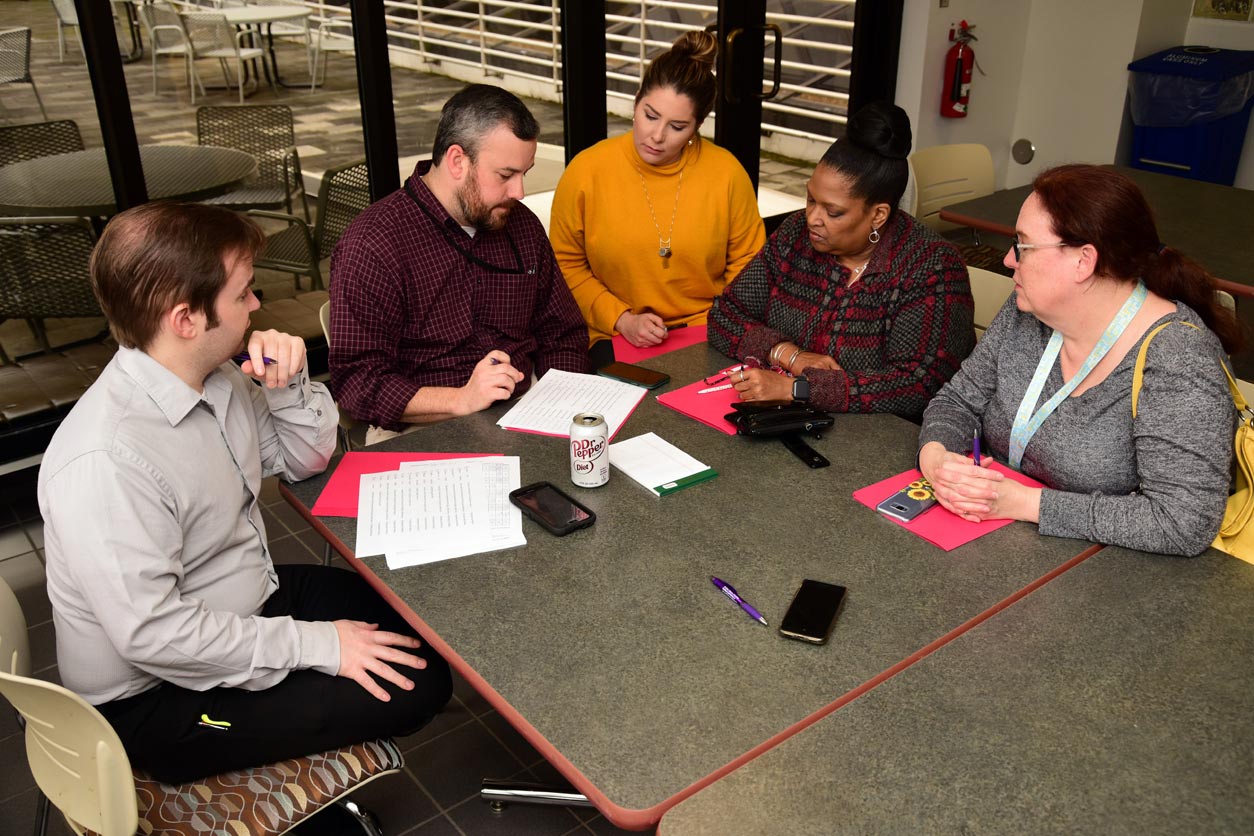 NIEHS staff and contractors who volunteered to judge faced difficult decisions. From left, Patrick Sullins, Michael Spencer, Kristen Fisher, Michelle Mayo, and Beth Kuhaneck. (Photo courtesy of Steve McCaw)
NIEHS staff and contractors who volunteered to judge faced difficult decisions. From left, Patrick Sullins, Michael Spencer, Kristen Fisher, Michelle Mayo, and Beth Kuhaneck. (Photo courtesy of Steve McCaw)“This work is an important first step toward showing how common environmental contaminants may threaten placental health and result in diseases such as obesity and the number one killer in America, heart disease,” said Blake.
Predicting breast cancer risk
“Wouldn’t it be great if we could identify women who are going to develop breast cancer before a tumor even forms?” said Kresovich. “I’ve developed a risk model using information from the epigenome, a collection of molecular modifications to DNA that can determine which genes are turned on and off,” he told the audience.
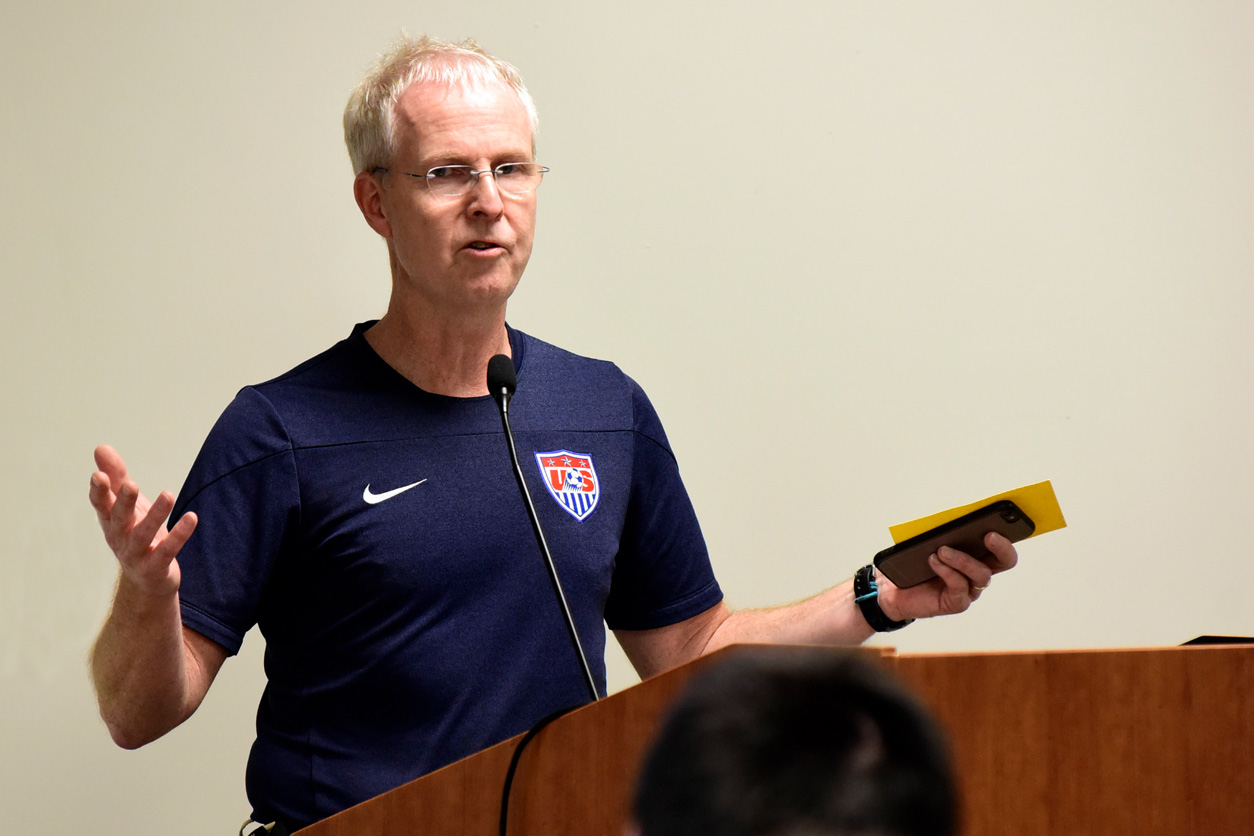 Staff scientist Gary Bird, Ph.D., from the Signal Transduction Laboratory, served as timekeeper. His yellow card indicated that 30 seconds remained. (Photo courtesy of Steve McCaw)
Staff scientist Gary Bird, Ph.D., from the Signal Transduction Laboratory, served as timekeeper. His yellow card indicated that 30 seconds remained. (Photo courtesy of Steve McCaw)“I’m grateful for the mentors at NIEHS who have helped me turn my crazy research ideas into real discoveries. We are one step closer to developing a blood-based test that can accurately predict who is going to develop breast cancer,” Kresovich said.
Genetic recipes
Bhawsinghka likened the focus of her work to cooking, where small recipe changes can significantly alter outcomes. “My research is like that — I study the changes, or mutations, as they are called in scientific terms, that are going on inside a living cell,” she said.
“When a cell divides, it gets its DNA from the parent, just like a family recipe passed down through generations,” Bhawsinghka said. “But sometimes, there are changes or modifications to this DNA.”
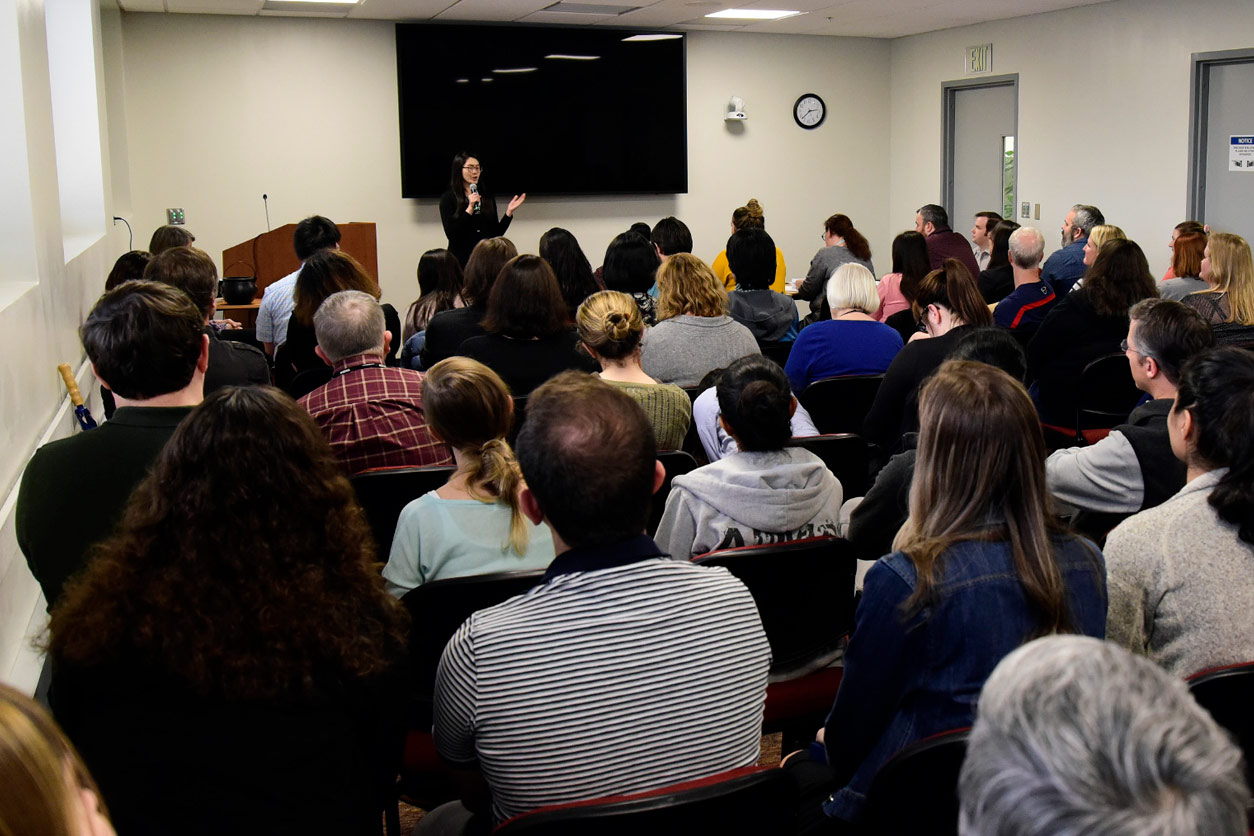 NIEHS leaders, scientists, and administrators packed the room to listen to the presentations. (Photo courtesy of Steve McCaw)
NIEHS leaders, scientists, and administrators packed the room to listen to the presentations. (Photo courtesy of Steve McCaw)She said that her work to understand how those changes occur could shed light on the formation of certain cancers and on why some bacteria become resistant to antibiotics.
According to Collins, the winners’ composure and ability to explain their research using clear analogies stood out. “They ended with a strong take-home message,” she said.
(Ernie Hood is a contract writer for the NIEHS Office of Communications and Public Liaison.)





